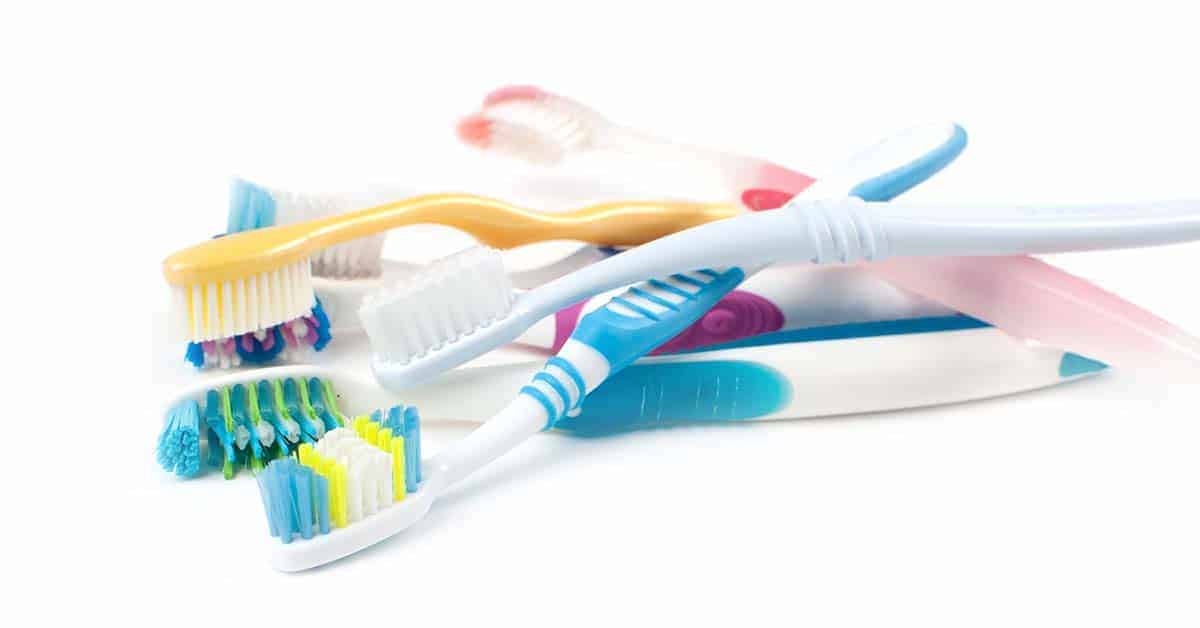If you have found yourself in the toothbrush aisle of a store, confused on which toothbrush to choose, you’re not alone. Fortunately, there are numerous toothbrush options depending on what your needs are, but it can get a little overwhelming to know which type of toothbrush is right for you.
Choosing a toothbrush is certainly a personal preference. While some people prefer manual brushes, others like to dive into the electric toothbrush arena. If you find yourself a little confused, speak with your dentist and hygienist about which is the most appropriate toothbrush for you.
Types Of Toothbrushes
Electric
There is no question that electric toothbrushes are recommended by most dental professionals. Electric toothbrushes offer superior features like advanced plaque removal, pressure indicators, and personalized timers.
An electric toothbrush can range in price depending on the advanced technology, but the average price tag spans $30 to over $250.
Many electric toothbrushes like Sonicare and OralB offer advanced technology that promote better oral hygiene habits. The oscillating feature and multiple brush heads of electric toothbrushes aids people to improve their brushing technique is a main selling feature. Several have brushing heads designed for gum massaging or sensitive teeth and can help alert a person if they are brushing too hard, which is damaging to tooth enamel and gum tissue.
Manual
Despite the popularity of electric toothbrushes, according to the US Census in 2020, more than 250 million Americans still prefer a manual toothbrush. A manual brush has numerous benefits which make it a popular choice.
A manual toothbrush is more affordable than an electric toothbrush and offers sleek ergonomic designs that make it appealing. There are many types of manual toothbrushes on the market depending on a person’s needs, whether it is for a child, teeth whitening, periodontal disease, or for people with dexterity issues.
A manual toothbrush should be changed every 3-4 months or sooner if you are ill. You also may want to switch out your brush if you notice the bristles are worn down and frayed. This indicates that you may be brushing too hard.
What Else Should You Be Looking For In A Toothbrush
Once you choose your preferred type of brush, there are several other considerations to look for in a toothbrush. Remember, not all are created equally. You should always speak with your dentist and dental hygienist prior to choosing a toothbrush so you use the one best for you.
Bristles
Many people think that the harder the bristle, the more plaque control they will have. In fact, the stiffness of the bristles is one of the most important features of a toothbrush. Brushes come with many choices – hard, medium, and soft, but you should never choose a hard or medium bristle brush.
The more stiff and hard the bristles, the more likely you are to cause receding gums and enamel wear. This can lead to cosmetic concerns, but also leads to sensitivity and pain. Using hard bristles over time increases your risk of tooth and root decay, leading to long-term dental problems.
Think of cleaning a very strong, but delicate material like stainless steel. If you use a cleaning material like brillo or aluminum pads, they can easily scratch and destroy the material.
Choose bristles that are soft and rippled or angled to help remove plaque and food debris.
Handle
Not many people think about toothbrush handle size, but it actually has a major effect on your brushing technique.
Choose a toothbrush with an ergonomic handle design or no-slip design to help reach those difficult areas. Also, if a brush is hitting your opposite jaw, you may be using a brush that is slightly too big.
Many people don’t realize they can use a smaller toothbrush and still achieve good oral care. It just may take a few extra minutes to clean those difficult to reach areas.
Toothbrush head
When you are choosing a toothbrush, there are several choices depending on your needs. There are toothbrush heads with a conventional head that is rectangular shaped with rounded corners.
Some brush heads are smaller to help reach those difficult areas and tight spaces in the back of the mouth. If you find yourself gagging or scratching the back of your mouth, you may need to use a smaller sized toothbrush head, similar to a child’s size brush.
For most adults, they need an adult sized toothbrush head to reach around all of the teeth and gums to properly clean. Both manual and electric toothbrushes have different advantages with their brush head size.
ADA Seal
When a toothbrush has the ADA seal, it indicates it went under extensive testing to deem products safe and efficient for removing plaque.
As per the ADA Council on Scientific Affairs, choose a brush that is evaluated by experienced dentists to ensure they have a proper handle and brushes that are designed to reduce your risk for tooth decay and gum disease.
The Final Verdict
There are so many choices of toothbrushes for people of all needs. If you are looking for a brush for whitening or for a person with dexterity problems, there are great options with both manual and electric or battery operated toothbrushes.
Most dentists recommend an electric toothbrush because it comes with advanced features like pressure indicators and timers that help assist with brushing. They are rechargeable and environmentally friendly, as well as offering oscillation and spinning for optimal oral health.
Regardless of the brush you choose, go with an ADA approved toothbrush and one that contains soft or extra soft bristles to prevent irreversible enamel abrasion and gum damage.
Remember, you can always change out your toothbrush if your needs and preferences change, there is no permanent option.

